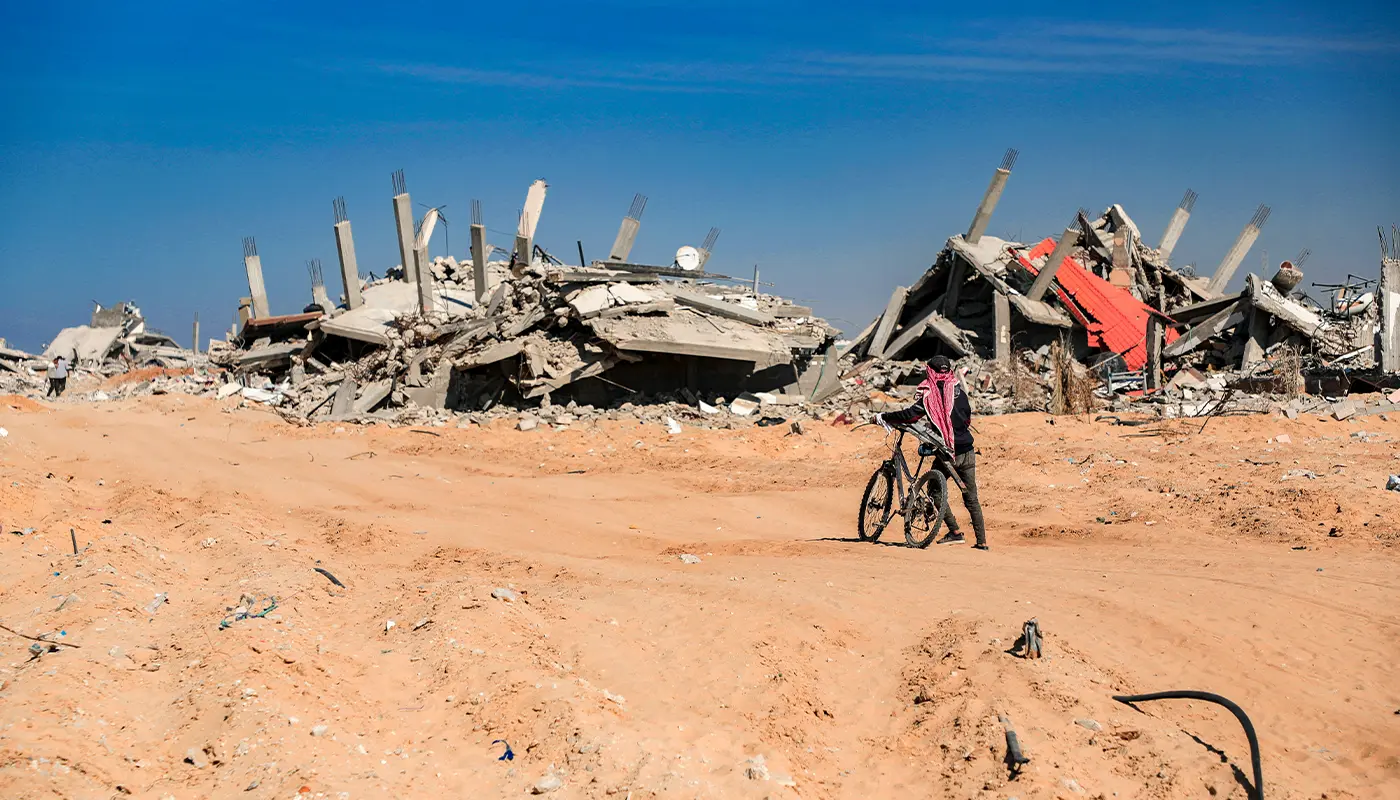Washington DC and Tel Aviv are reportedly advancing work on a framework to partition the Gaza Strip into two distinct zones, one under Israeli control, the other remaining under Hamas governance as part of a post-war reconstruction and security strategy.
According to press coverage, the US and Israeli officials are conceptualising a “safe-zone” model in which rebuilding efforts would begin only in the sectors secured by the Israel Defence Forces (IDF). Reconstruction funds would not be channelled into areas still under Hamas’ administration, the plan’s proponents say.
US Vice-President J.D. Vance described the enclave as composed of “two zones, one relatively safe and one extremely dangerous,” adding that the US objective was “to expand the safe zone geographically.” Meanwhile, former senior White House adviser Jared Kushner said: “There are considerations happening now in the area that the IDF controls … to start the construction of a new Gaza … to give the Palestinians living in Gaza a place to live, work, and rebuild their lives.”
The proposal remains in an early “preliminary” stage; US officials caution that the details are yet to be finalised.
Regional and Political Implications
The plan has sparked alarm among Arab states and regional mediators, who fear that such a division could entrench a permanent Israeli presence inside Gaza and effectively normalise occupation-by-another-name. One diplomat was quoted describing the model as “a recipe for generating chaos and tension in the region because the people of Gaza will not allow such plans to pass.”
Critics argue that by splitting Gaza into “rebuilt” and “neglected” halves, the strategy risks creating a two-tier society: one zone receiving investment and security, the other left in limbo under Hamas control and without reconstruction support. The concern is the project might become a structural normalisation of fragmentation.
For Israel, the arrangement presents a way of gradually gaining control while limiting its responsibilities for full governance of the enclave. For the US, it is framed as a means to move beyond military conflict into stabilisation and reconstruction after recent hostilities.
Key Components of the Proposal
- A dividing line in Gaza separating a secured zone under Israeli oversight from a Hamas-governed area still to be addressed.
- Reconstruction work and international investment to be directed first and exclusively to the Israeli-controlled zone until Hamas is disarmed and removed from power.
- The creation of mechanisms for eventual transitional governance and disarmament of Hamas as prerequisites for full reconstruction of the enclave.
- Significant warnings: Arab states reportedly unwilling to provide troops, monitor or police under a partitioned Gaza model, seeing it as undermining Palestinian sovereignty.
What’s Next
With the cease-fire still fragile, any change in Gaza’s governance model will require broad regional buy-in as well as Palestinian agreement. Hamas has not publicly endorsed this specific model of division. Implementation hinges on the next phase of negotiations on governance, security and reconstruction.
As the concept gains traction, questions remain: How will borders between the two zones be managed? Who will guard crossings and ensure movement of people and goods? What happens to Gazans in the zone under Hamas control, will they receive reconstruction aid at all? And how might this affect longer-term prospects for Palestinian statehood or a two-state solution?
In sum, the US-Israel plan to split Gaza into two operational zones marks a major shift in conflict-resolution thinking for the area. Whether it becomes accepted policy or a blueprint for deeper division and entrenchment, will depend on how the various stakeholders respond in the coming days.
Sources: The Wall Street Journal, Jerusalem Post, AntiWar




